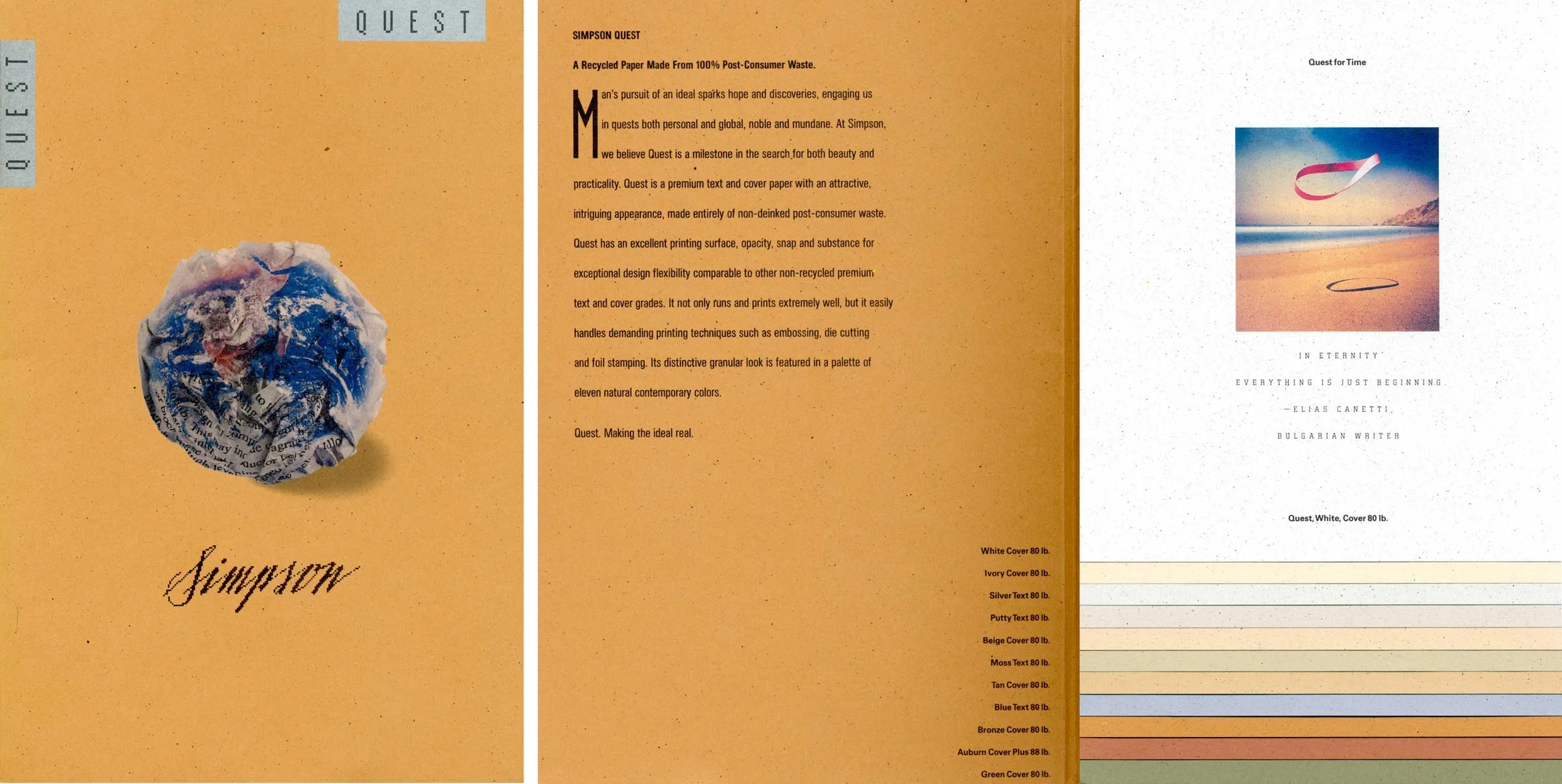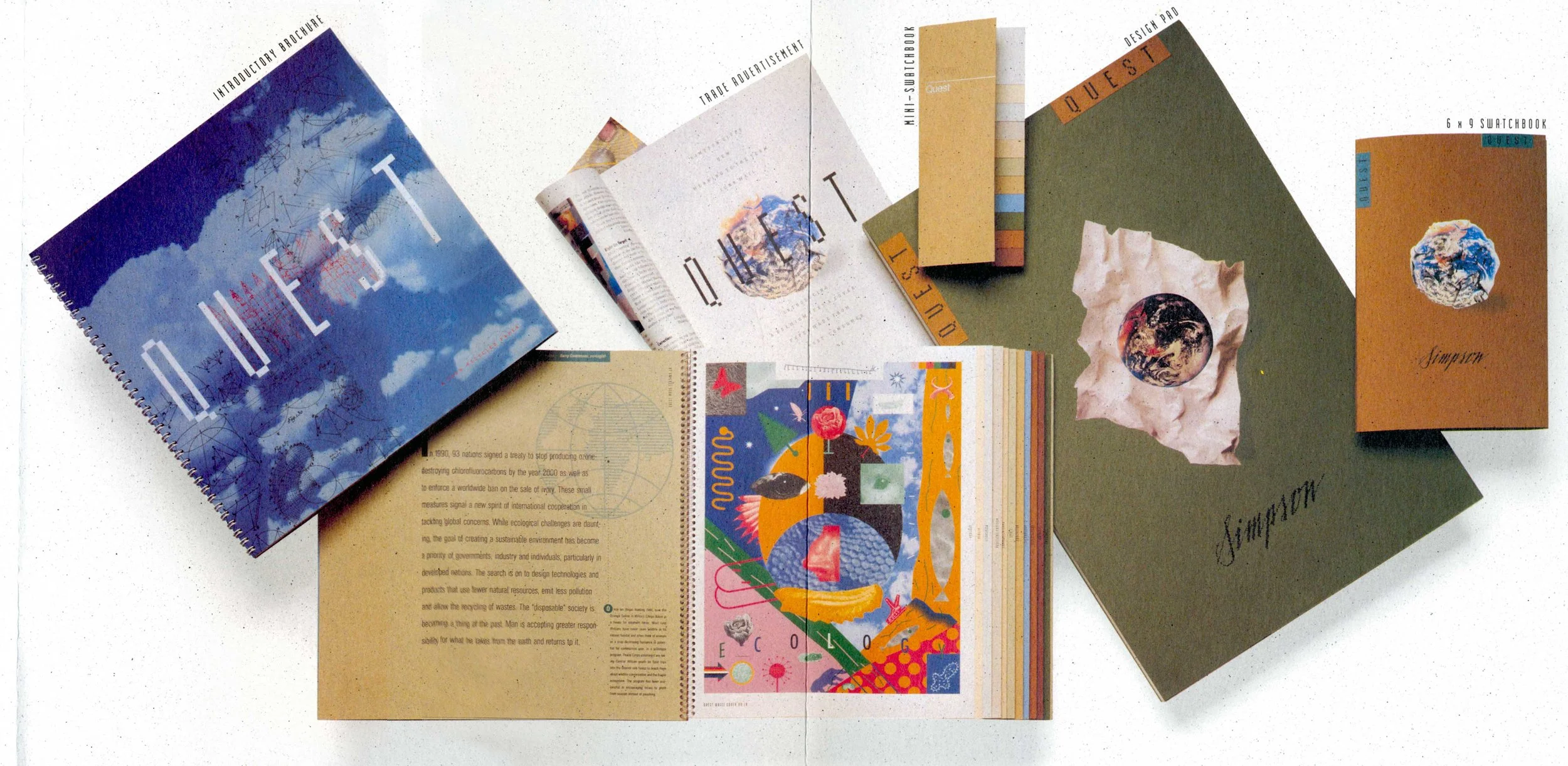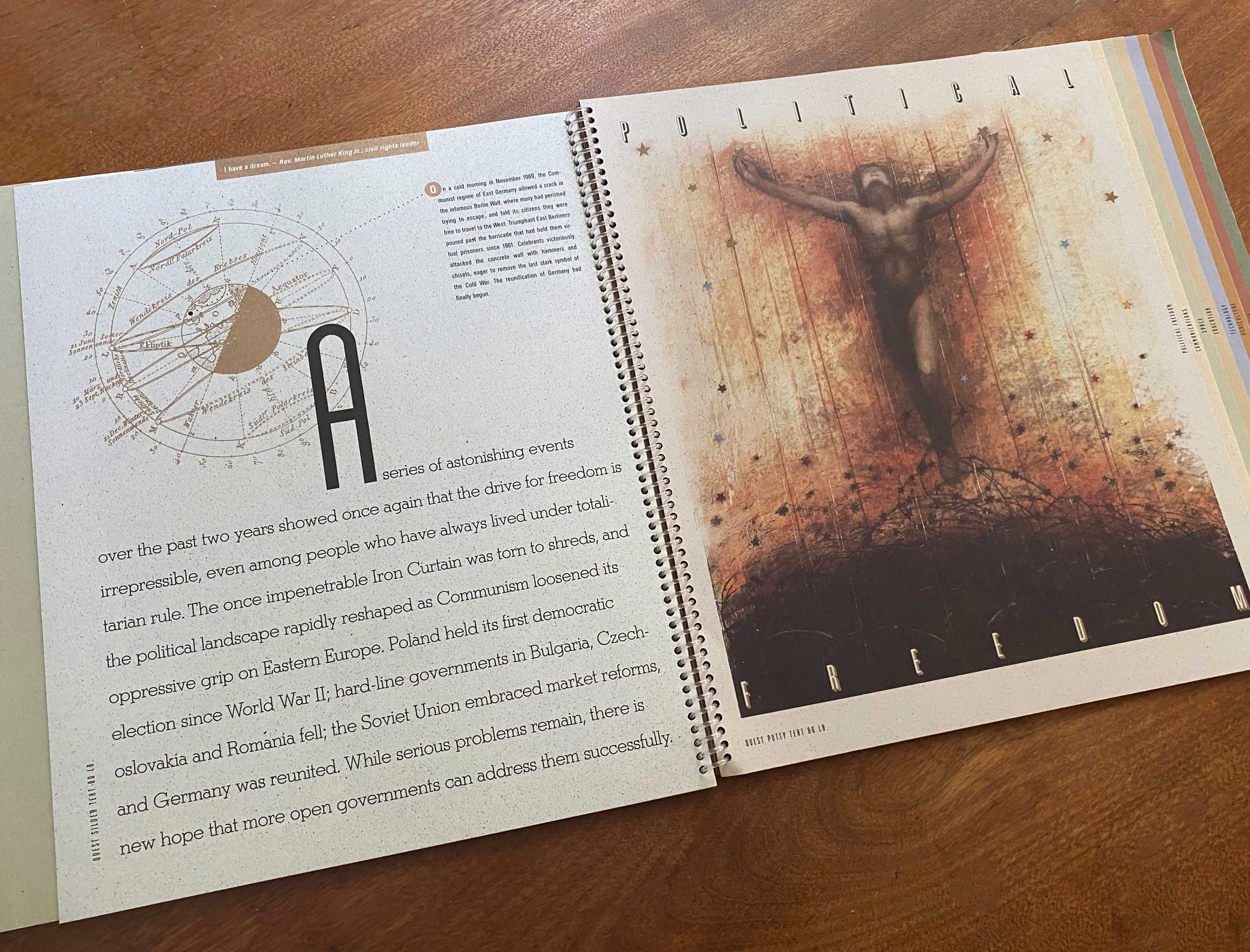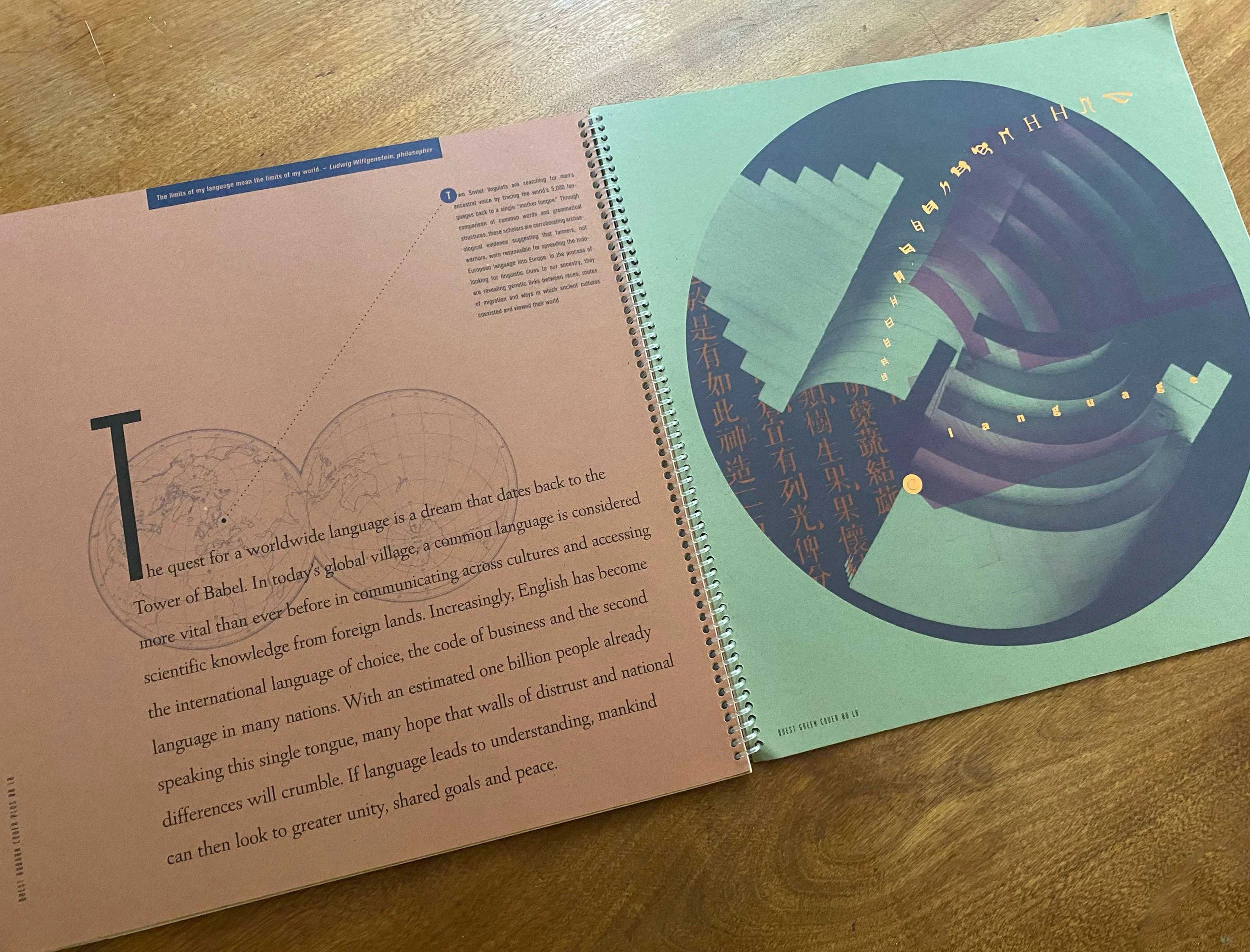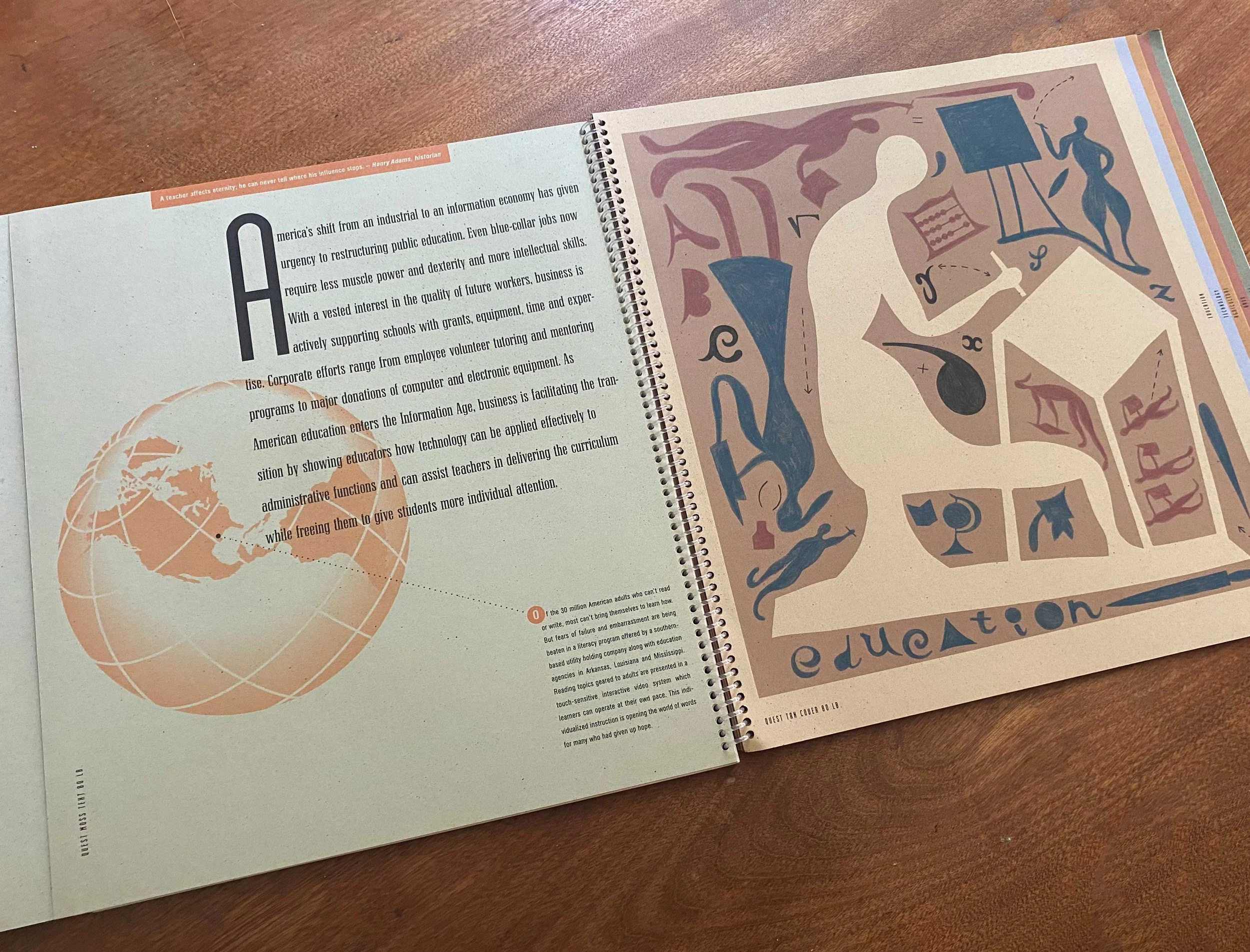SIMPSON QUEST
Product Design and Promotional Campaign
Simpson Paper Company 1991
Product Strategy: Gary Snider, Simpson
Product and Supply Chain Development: Tim Seifert, Simpson
Collateral Design: Kit Hinrichs, Pentagram SF
Color Palette Design and Marketing Communications: Dave Van de Water, Simpson
Simpson Quest was the first premium text and cover paper made from 100% post-consumer waste paper.
It required the development of a brand new supply chain that separated high quality office waste — computer printouts, office documents and such — from other trash generated by large corporations and financial institutions. Trash Dealers throughout the midwest were recruited to install recycling bins inside offices and train staff to keep the paper waste segregated.
Designed for a specific paper machine at Simpson's Vicksburg Mill near Kalamazoo Michigan, the project took over a year to complete, with repeated trials needed to perfect the supply chain and process flow within the mill.
The grade was launched in 1991, just as the early 90's recession was slowing the paper market. To ensure the new grade was embraced by paper merchants, Gary Snider, head of marketing and business planning, asked us to develop an aggressive promotional campaign that was upbeat and inspirational, while setting the grade apart for its promise of environmental benefits.
To promote the grade, we asked Kit Hinrichs, who had created the highly successful promotion "American Naturalists" for Evergreen Text, to design a lush oversized brochure, researched and written by Delphine Hirasuna, featuring profiles on technological and social innovations illustrated by leading American illustrators. Each spread described a unique development that promised to improve the quality of life in society. Original artwork was reproduced on the 11 shades of the grade in a waterfall pattern that showed the warm, earthy tones of the color palette.
The palette design was a bold departure from the existing array of American text and cover grades, which still reflected the optimistic post-modern trend of the 1980’s with bright pastels influenced by events like Sussman Prezja’s ‘84 Olympics, the Miami Vice TV series and Robert Venturi’s architecture. By the time the 20th anniversary of Earth Day arrived, American design had moved strongly toward a natural environmental aesthetic as characterized by the popular series Twin Peaks, and marketers like Patagonia and The Nature Company.
In addition to the earthy palette, the surface appearance of Quest featured a visual texture of fine specks dispersed through the sheet, somewhat evocative of sandpaper. Serendipitously, inspired by a similar Washi paper we had found from Japan, our papermakers had been unsuccessfully trying to create the same look using other fiber inclusions. However, when the fused carbon toner on reclaimed laser printouts was broken up in the pulper, it produced exactly the right visual texture. That lucky twist meant we could avoid the added step of de-inking printed waste, reducing Quest’s environmental footprint even further.
The result was a highly successful product line that generated millions in sales during a challenging economic period. All in all, Quest was a textbook case of capturing lightning in a bottle.
Simpson Quest Launch Promotion
Simpson Quest Launch Materials by Kit Hinrchs, Pentagram SF
Simpson Quest: Agriculture
Simpson Quest: Political Freedom
Simpson Quest: Language
Simpson Quest: Health
Simpson Quest: The Arts
Simpson Quest: Education

